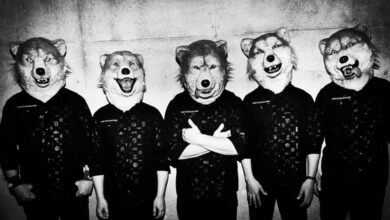Song of the Summer – This Week in Anime
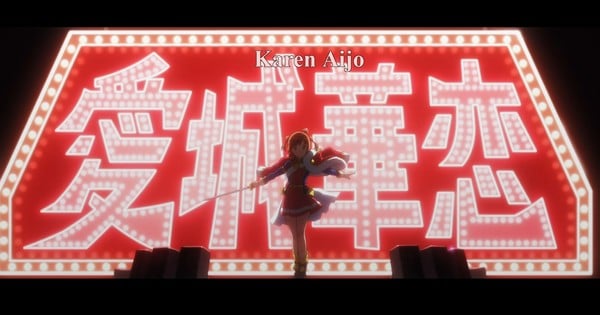
There may not be a Top 40 “song of the summer” for 2025, but Coop and Chris have some good anime options!
Disclaimer: The views and opinions expressed by the participants in this chatlog are not the views of Anime News Network.
Spoiler Warning for discussion of the series ahead.
Undead Murder Farce, Symphogear, Fairy Ranmaru, and Red Garden are available on Crunchyroll. The Rose of Versailles movie is on Netflix. Revolutionary Girl Utena is available on YouTube. All Macross series are on Hulu. Revue Starlight is available on HIDIVE.
Coop, it looks like the absolute cursed confluence of weebs and theater kids is set to happen sooner rather than later, as we got word of Andrew Lloyd Webber’s Phantom of the Opera getting optioned for an anime adaptation! Now my first thought was that this could lead us to looking at other anime incarnations of the Phantom, but the only ones I could think of were a tool of a 2-Star Assassin from Fate/Grand Order and the admittedly hot version from Undead Murder Farce.
© TYPE-MOON / FGO PROJECT © Copyright 2017 Aniplex Inc.
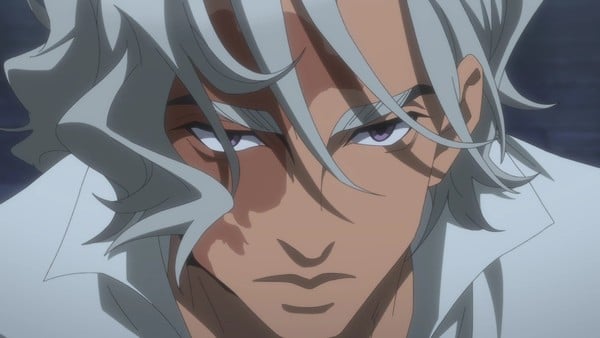
© 青崎有吾・講談社/鳥籠使い一行
Slim pickings, so maybe it’s best to broaden our scope a bit.
As cursed a pairing that might be (both in theory and application), it seems to me that the stage and animation have always been in conversation, Chris. For an inverse of Phantom, in which an anime has been adapted for the stage, look at the Frank Wildhorn-composed Death Note and Your Lie in April musicals. Deeper than that, anime has probably taken cues from the stage since the medium’s inception. Starting with Noh, Kabuki, and other traditional Japanese stage arts, before evolving with the emergence of the Takarazuka Revue, experimental theater, and Western productions. You could easily argue that the birth of 2.5D stage shows is the culmination of this relationship.
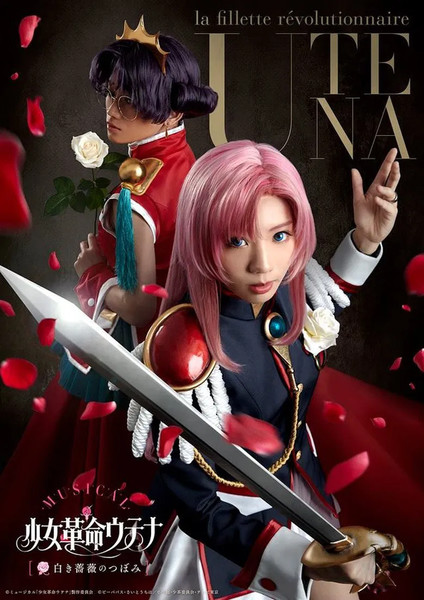
© © ビーパパス・さいとうちほ/小学館・少革委員会・テレビ東京 © ミュージカル「少女革命ウテナ」製作委員会
And yes, Chris, before you ask, I was a theater major.
But that might be a medium too far for the focus of this column, and as you pointed out, anime and musical theater have intertwined plenty before the Phantom got a chance to drop a chandelier on the stage. Live adaptations of everything from Bleach to The Prince of Tennis, yes, but also whole anime that qualify as musicals in their own right!
I won’t hear “Kakusei” and NOT think of Lio’s rampage in the back half of Promare…or NOT see this as the opening number to Dirty Pair: Project Eden.
Almost a musical!
Now, this does naturally lead into a discussion of one of the most recent anime “musicals” to pop up, and one I was thus disappointed at the handling of (in multiple ways)! The Rose of Versailles on Netflix was sold to me as a “musical” when it dropped, but in truth it’s closer to Project Eden up there, with the songs playing over glorified music videos with lyrics being sung in the background.
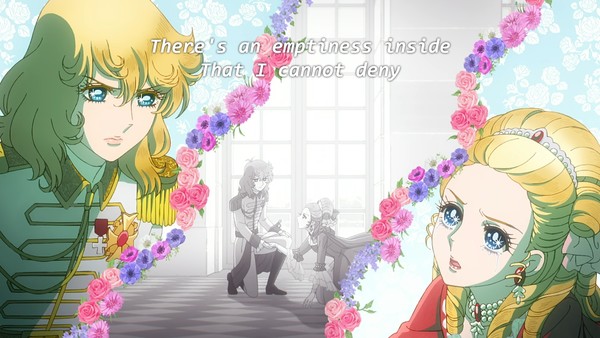
© 池田理代子プロダクション/ベルサイユのばら製作委員会
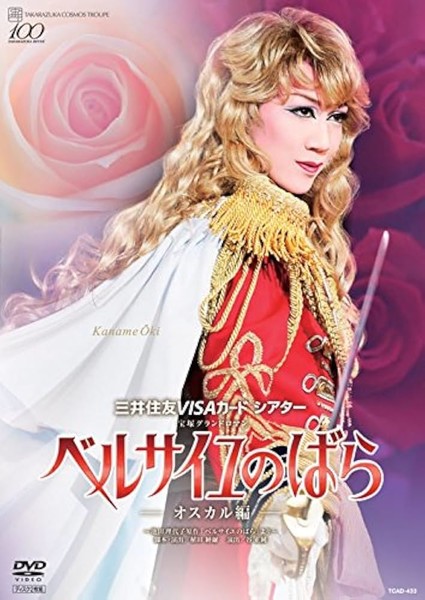
© Ikeda Riyoko Production © Takarazuka Revue © Takarazuka Creative Arts
Secondly, there’s this other musical involving the French Revolution that serves as a perfect example of how to adapt a dense work for the same runtime.
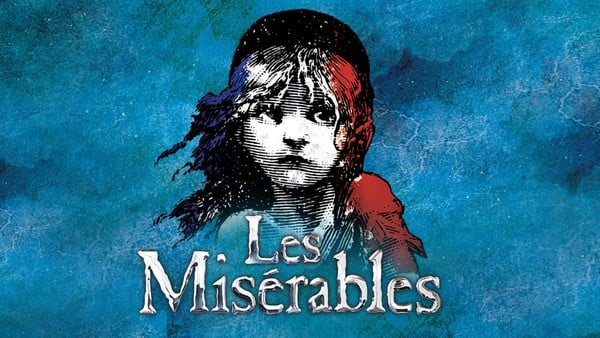
© Cameron Mackintosh Overseas Limited
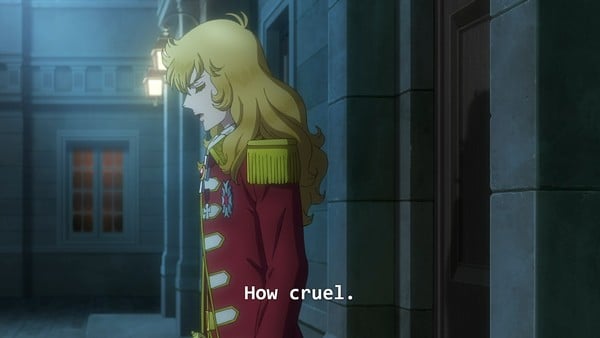
© 池田理代子プロダクション/ベルサイユのばら製作委員会
I can see how they thought to go this direction. Musical montages, on paper, make for an effective way to speed through periods and emotional character arcs in a way that more rigid writing would take too long doing. Just coast on the musical vibes. But you can only see a few extremely brisk numbers of Oscar and Marie and pals vamping around to music about how conflicted they are, followed by another four years passing as a caption before the one trick starts to wear thin.
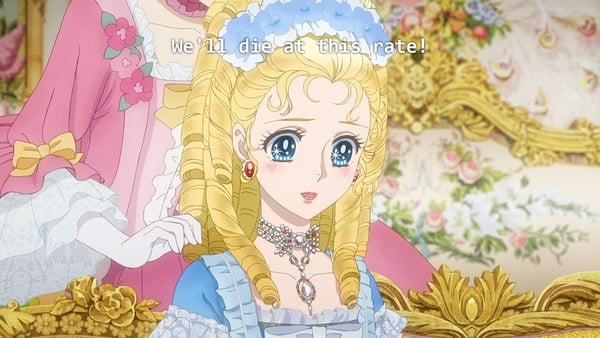
© 池田理代子プロダクション/ベルサイユのばら製作委員会
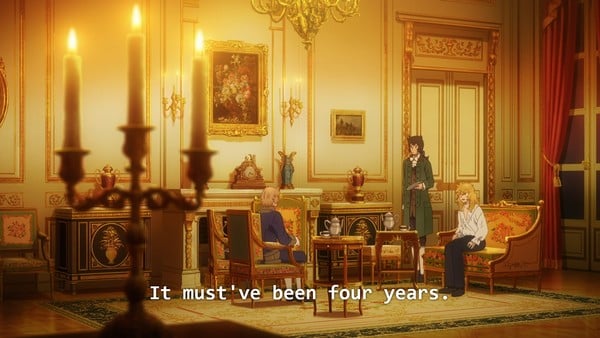
© 池田理代子プロダクション/ベルサイユのばら製作委員会
Would it have been more tenable with the characters directly belting out the lyrics on-screen? Hard to say, but I think it at least would’ve been more entertaining.
It all makes me feel as if they weren’t able to fully commit to the musical aspect of the film. Because when a show can nail a number, the entire emotional experience is made better for it. For as talented as Hiroyuki Sawano and Kohta Yamamoto are, I wouldn’t say they’re the right composers for a proper, old-style musical.
I agree on the theatricality of Sawano’s tunes, but perhaps it was a bit of a mismatch of thematicity—at least for me. It’s probably an unfair comparison to make, but my brain goes to the sound of Sondheim’s works (specifically Into the Woods) or again, Les Mis, when it comes to grand, sweeping musicals. Then again, that line of thinking is probably a bit limiting if a creative is looking to strictly follow those well-traveled paths.
When you hear the people singing the song of angry men, it’s sometimes hard to get it out of your head, Chris.
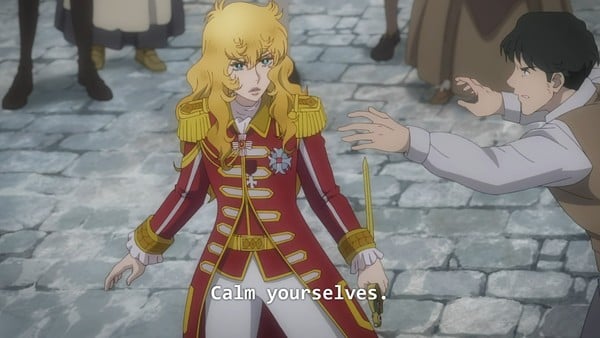
© 池田理代子プロダクション/ベルサイユのばら製作委員会
You do see a lot of would-be musical anime not going quite all-in on the presentation. I’ll always go to bat for Fairy Ranmaru, but even its fabulous musical interludes stop short of having the characters sing the lyrics right there with their mouths.
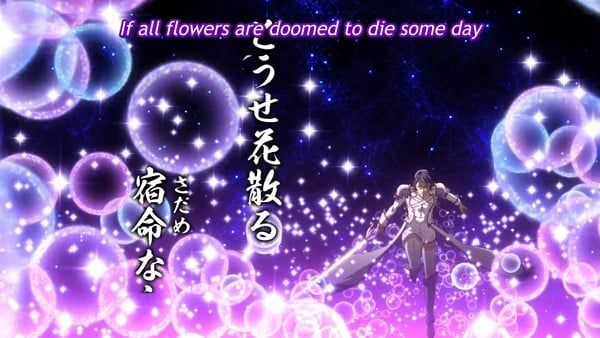
© 馬谷たいが/F蘭製作委員会
Conversely, our illustrious editor Lynzee alerted us to the mid-2000s Gonzo joint Red Garden, a fascinating piece with its musical inclinations. I’m motivated to check out more of it, but among everything else this show has going on in the opening episodes I sampled, the musical elements are largely limited to a few scattered laments by the cast about their supernatural circumstances.
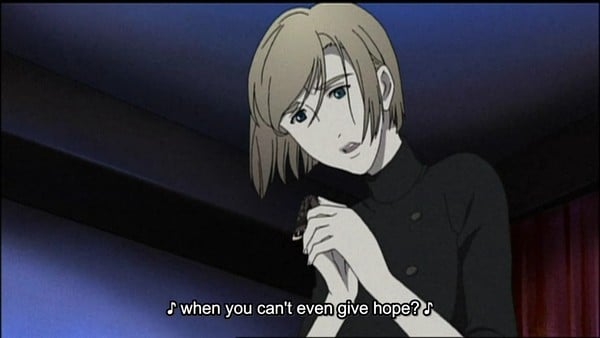 © 2006 GONZO / RED GARDEN PRODUCTION COMMITTEE |
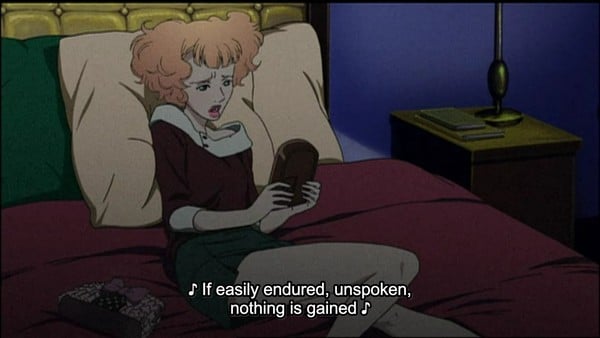 © 2006 GONZO / RED GARDEN PRODUCTION COMMITTEE |
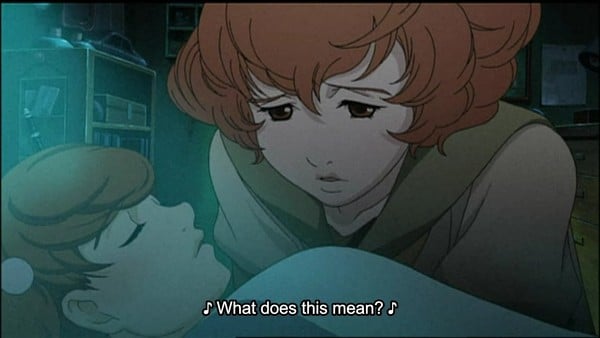 © 2006 GONZO / RED GARDEN PRODUCTION COMMITTEE |
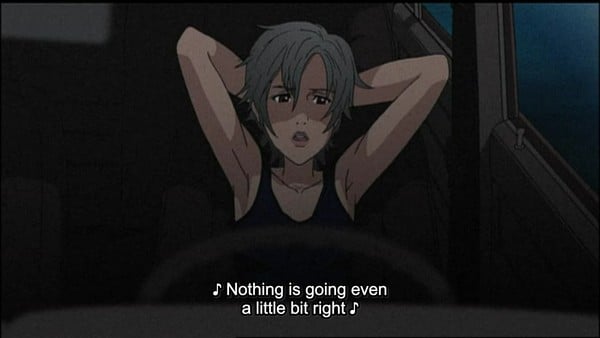 © 2006 GONZO / RED GARDEN PRODUCTION COMMITTEE |

© 2006 GONZO / RED GARDEN PRODUCTION COMMITTEE
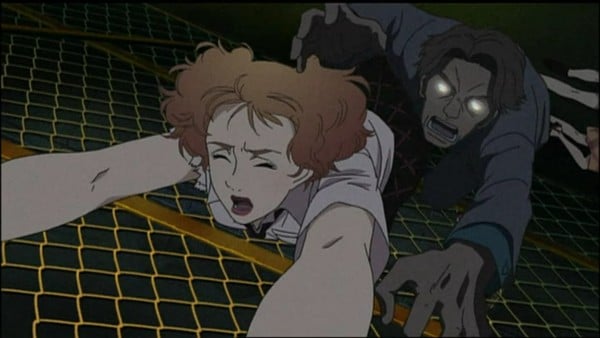
© 2006 GONZO / RED GARDEN PRODUCTION COMMITTEE
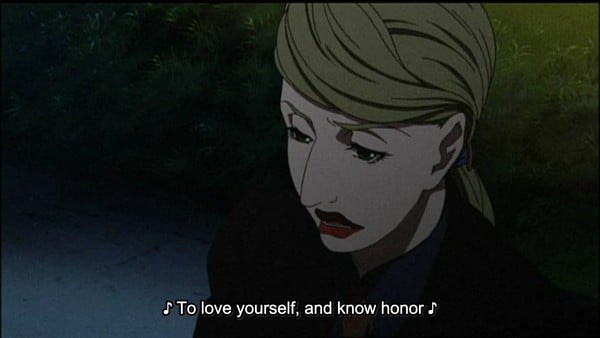
© 2006 GONZO / RED GARDEN PRODUCTION COMMITTEE
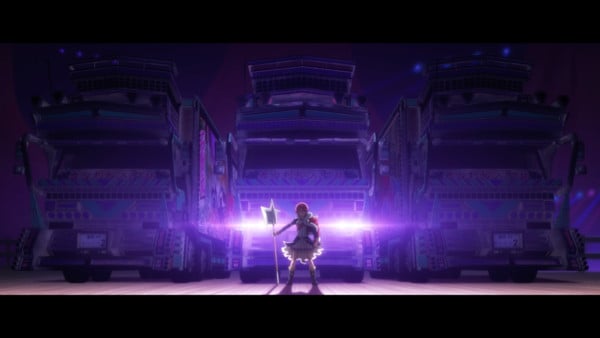
© Project Revue Starlight
I can’t think of a better example of this concept in practice than Revue Starlight and its film follow-up. When it comes to a battle of wills through song, it’s hard to beat a breakup song that’s punctuated by a fleet of semi trucks that are sent flying at both parties
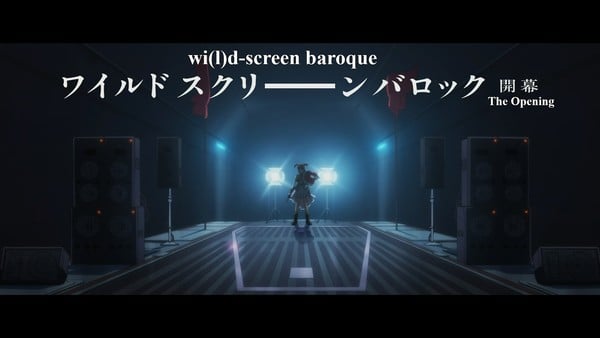
© Project Revue Starlight
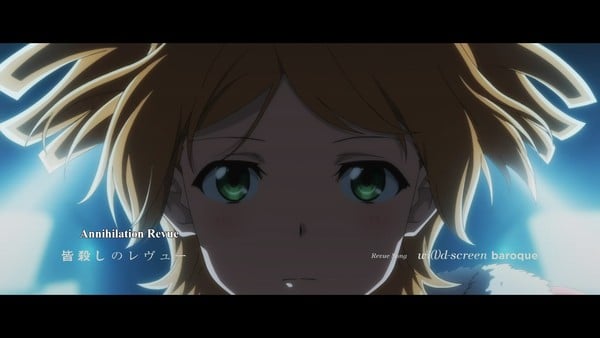
© Project Revue Starlight
I love how the dueling musical numbers are something the girls are more directed to do in the TV series, but by the time of Revue Starlight The Movie, they’re all so bursting with unresolved tensions that they soon effectively self-sort into fights where they’ve got to riotously resolve things through lovingly loaded lyrics.
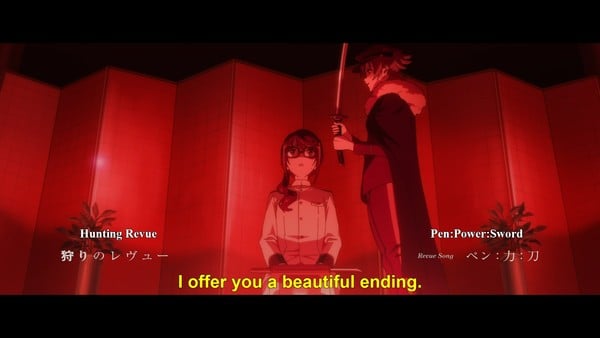
© Project Revue Starlight
These clashes did so much to address my only real issue with the series itself—these girls are way too nice to each other. There’s too little jealousy or friction between the members of the 99th class. Perhaps there’s an air of sportsmanlike rivalry shown, but theater kids (especially teenagers) are brutal—one-upsmanship is more of the mo in reality. I was thrilled to see The Movie address that issue right away by upping the angst immediately.
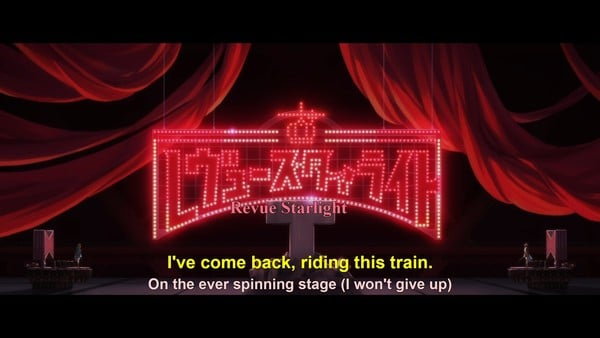 © Project Revue Starlight |
 © Project Revue Starlight |
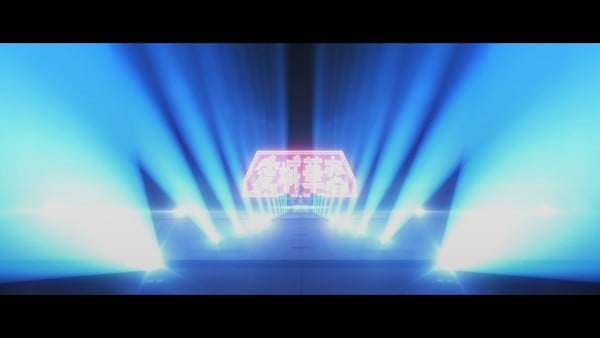 © Project Revue Starlight |
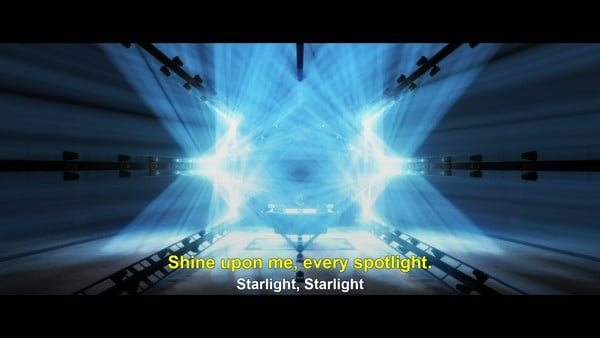 © Project Revue Starlight |
Also appropriately for the theater, it’s freaking homoerotic.

© Project Revue Starlight

© 1997 BE-PAPAS/CHIHO SAITO/SHOGAKUKAN • SHOKAKU • TV TOKYO
As Steve mentioned when we talked about it at length earlier this year, Revolutionary Girl Utena goes all in with its theatrical imagery. Aside from the overwhelming influence of Shūji Terayama and J. A. Seazer, there’s a fair bit of exploration with the concept of a stage itself, with series’ dueling grounds. At first, it feels very much like a blank canvas for stage combat, but abstracts over time with the introduction of increasingly bizarre set pieces and props starting in the Black Rose Saga.
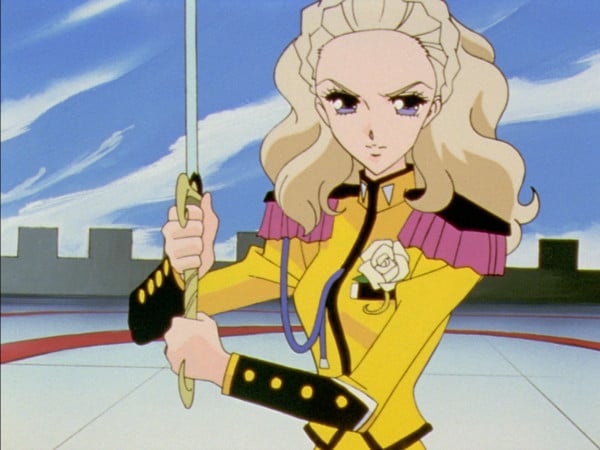
© 1997 BE-PAPAS/CHIHO SAITO/SHOGAKUKAN • SHOKAKU • TV TOKYO
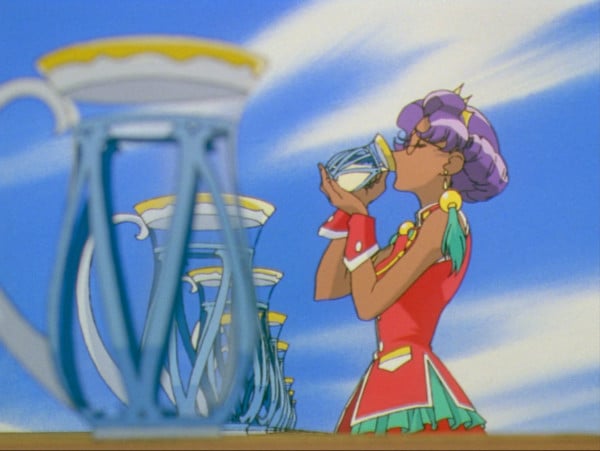
© 1997 BE-PAPAS/CHIHO SAITO/SHOGAKUKAN • SHOKAKU • TV TOKYO
If Utena were a theater person, they’d be the designer who obsesses over how to best shatter the audience’s conceptions of the stage. Be it through set design, the lighting, or the use of projections. However, the series itself is very keen on cluing in the audience to be suspicious of whoever’s running it all back in the booth.
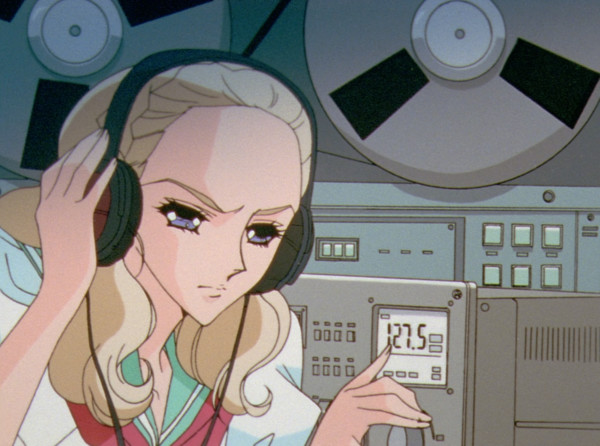
© 1997 BE-PAPAS/CHIHO SAITO/SHOGAKUKAN • SHOKAKU • TV TOKYO
Though more focused on more traditional musical fare, Revue Starlight shares so much of this specific strain of DNA I’m scratching at here. Then again, Starlight’s director, Tomohiro Furukawa, worked under Utena director Kunihiko Ikuhara before staging his own animated play.
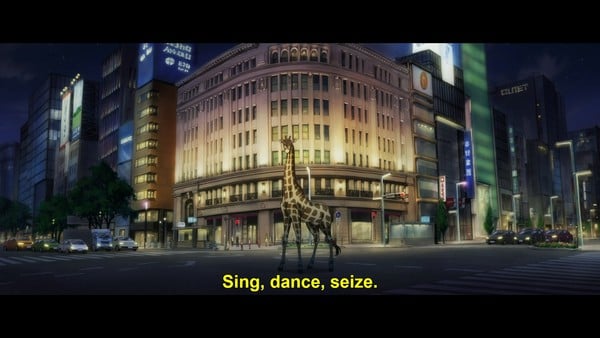
© Project Revue Starlight
It, along with Utena, stands as an example of the myriad ways music and theatricality influence anime, while spurring it in some cases to become a musical itself.
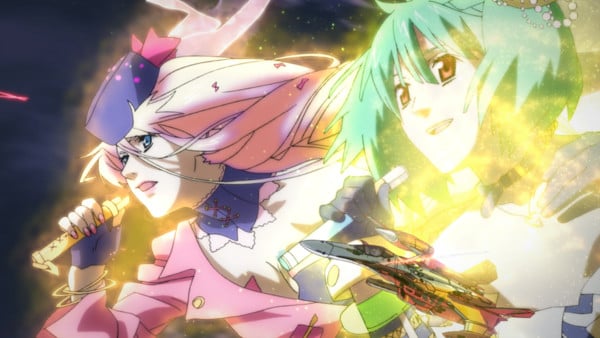
© 2009, 2011 BIGWEST/MACROSS F PROJECT
It’s very hard for me to watch the finale of Macross Frontier: The Wings of Farewell and not feel that explosive outpouring of emotions we’ve been coming back to again and again.
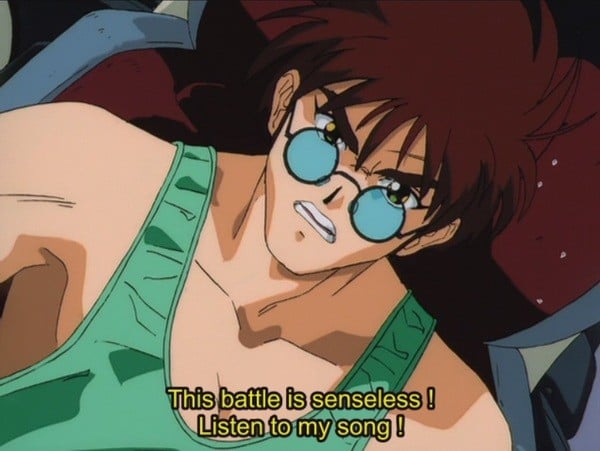
© 1994 BIGWEST/MACROSS 7 PROJECT
It’s time to update the ranking of the world’s highest mountains once again.
It’s how I learned that you don’t HAVE TO put beef in your stroganoff.
Nevertheless, Andrew Lloyd Webber’s Phantom might find itself in good company whenever it takes the anime stage.

